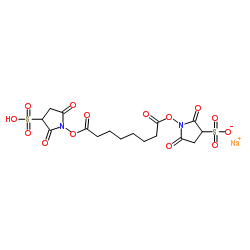| 结构式 | 名称/CAS号 | 全部文献 |
|---|---|---|
![双[2-(琥珀酰亚胺基氧羰基氧基)乙基]砜 结构式](https://image.chemsrc.com/caspic/276/57683-72-4.png) |
双[2-(琥珀酰亚胺基氧羰基氧基)乙基]砜
CAS:57683-72-4 |
|
 |
双琥珀酰亚胺辛二酸酯钠盐
CAS:82436-77-9 |